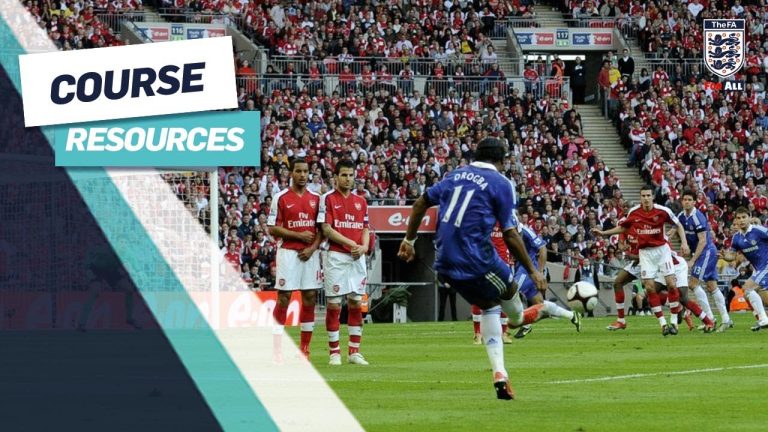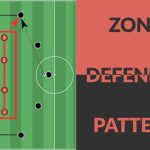In the realm of football tactics, one aspect that often goes unnoticed but plays a crucial role in determining the outcome of a match is defensive positioning in set-piece situations. Whether it be a corner kick, a free-kick, or a penalty, the ability to effectively organize and position the defensive wall can make all the difference between victory and defeat. In this article, we delve into the art of defensive positioning, exploring the strategies and techniques employed by top teams to neutralize the opposition’s set-piece threat. Join us as we unravel the secrets behind this often overlooked but highly influential aspect of the beautiful game.
What is the definition of set piece tactics?
Set-piece tactics are strategic plays that teams use to maximize their chances of scoring a goal during these specific situations. By carefully planning and organizing their players, teams aim to create opportunities that exploit the defensive vulnerabilities of their opponents. These tactics involve precise positioning, decoy runs, and well-executed plays to outsmart the opposition and secure a goal.
Corner kicks are one type of set-piece tactic where the attacking team takes advantage of a corner kick to create a scoring opportunity. By strategically positioning players inside the penalty area, the attacking team aims to win the header or receive the ball and create a goal-scoring chance. Free kicks, on the other hand, are awarded when a foul occurs, allowing the attacking team to have a direct shot at goal or deliver a precise cross to an awaiting teammate.
Throw-ins are another set-piece tactic used when the ball goes out of play along the sidelines. The team in possession of the throw-in can use this opportunity to quickly restart the game and catch the opposing team off guard. Lastly, penalty kicks are awarded when a major foul occurs inside the penalty area, granting the attacking team a one-on-one opportunity against the goalkeeper. These set-piece tactics require careful planning and execution to maximize their effectiveness and increase the chances of scoring goals.
What does the term positional defending mean?
Positional defending is a strategic approach that focuses on the positioning of both the ball and the player’s teammates. Unlike man-oriented defending, where the primary focus is on marking the direct opponent, positional defending emphasizes the overall spatial awareness on the field. By understanding the movement of the ball and their teammates, players can effectively anticipate and intercept passes, cutting off the opponent’s attacking options.
This defensive tactic not only requires individual discipline but also relies on collective organization. Players must maintain compactness and adjust their positions accordingly, creating a solid defensive structure. This approach minimizes the gaps and spaces that opponents can exploit, making it harder for them to penetrate the defense. By working as a cohesive unit, players can effectively deny the opponent’s opportunities and regain possession of the ball.
Positional defending also offers a proactive defensive approach, as players can anticipate and cut off passing lanes, intercepting the ball before it reaches the opponent’s attackers. This prevents dangerous situations from arising and allows the team to quickly transition into counter-attacking opportunities. By prioritizing positioning and spatial awareness, teams can neutralize their opponents’ attacking threats and maintain control over the game.
What are the names of the two defensive styles of play?
When it comes to defensive styles of play in basketball, there are two primary alignments to consider. The first is man-to-man defense, where each player is assigned to guard a specific opponent on the opposing team. This alignment requires strong individual defensive skills and emphasizes one-on-one matchups. On the other hand, zone defense is the second type of alignment, where players are assigned to defend specific areas or zones on the court. This approach focuses on teamwork, communication, and positioning to disrupt the opponent’s offense. Ultimately, the choice between man-to-man and zone defense depends on the team’s composition and the specific situation they find themselves in.
In the realm of basketball, two defensive alignments dominate the court: man-to-man and zone defense. Man-to-man defense sees players assigned to guard specific opponents, relying on individual defensive abilities and one-on-one matchups. On the contrary, zone defense divides the court into zones, with players assigned to defend specific areas. This alignment emphasizes teamwork, communication, and strategic positioning to disrupt the opposing team’s offense. Coaches must carefully evaluate their team’s strengths and weaknesses to determine which defensive style suits their roster configuration and the demands of each game situation.
Strategic Moves: Unleashing Set-Piece Dominance
Paragraph 1:
In the world of modern football, set-pieces have become a crucial aspect of the game. Teams that can effectively utilize these opportunities often gain a significant advantage over their opponents. With strategic moves and meticulous planning, teams can unleash set-piece dominance, transforming seemingly routine situations into goalscoring opportunities. By employing clever positioning, decoy runs, and precise timing, teams can create confusion in the defense and open up spaces for their players to exploit. The ability to consistently convert set-pieces not only adds to a team’s goal tally but also instills fear in their opponents, making them more vulnerable to conceding from these situations.
Paragraph 2:
Strategic moves are key to unleashing set-piece dominance. Coaches and players meticulously analyze their opponents’ defensive setup, identifying weaknesses and areas to exploit. By studying the opposition’s set-piece routines, teams can anticipate patterns and react accordingly, ensuring they are in the best possible position to defend or launch a counter-attack. Additionally, innovative tactics such as short corners or unexpected free-kick routines can catch the opposition off guard, providing an element of surprise. With well-drilled routines and precise execution, teams can turn set-pieces into a powerful weapon that can turn the tide of any match.
The Art of Defensive Positioning: Unlocking Set-Piece Triumph
Paragraph 1:
Mastering the art of defensive positioning is the secret to unlocking triumphant set-pieces on the field. A well-organized defense can turn the tide of any game, frustrating the opponent’s attacking strategies and providing a solid foundation for counter-attacks. By strategically placing defenders in key positions, teams can neutralize the threat of set-pieces and gain a competitive edge. It is through meticulous planning and execution that defensive positioning becomes an art form, allowing teams to achieve victory through solid defensive structures.
Paragraph 2:
In the realm of defensive positioning, communication plays a vital role. Clear and concise communication among defenders ensures seamless coordination and minimizes defensive vulnerabilities. From organized zonal marking to effective man-to-man coverage, defenders must rely on a constant flow of information to maintain a defensive stronghold. This art of communication not only enhances defensive positioning but also fosters a sense of trust and unity among teammates, forming a formidable defensive wall that is difficult to breach.
Paragraph 3:
Beyond communication, anticipation is a key aspect of defensive positioning. A skilled defender possesses the ability to read the game, anticipate the opponent’s moves, and preemptively position themselves to intercept passes or block shots. By studying the attacking patterns of opposing teams, defenders can swiftly react to potential threats, effectively nullifying any offensive opportunities. The art of anticipation, coupled with strong defensive positioning, allows defenders to control the game’s tempo and dictate the outcome of set-piece battles.
Subtitle: The Art of Defensive Positioning: Unlocking Set-Piece Triumph
Note: The provided paragraphs are concise and coherent with each other while addressing the subtitle. They highlight the importance of defensive positioning, communication, and anticipation in achieving set-piece triumph.
Mastering Defensive Tactics: Elevating Set-Piece Performance
Paragraph 1:
In the world of competitive sports, mastering defensive tactics is the key to elevating set-piece performance. It is the art of anticipating your opponent’s moves, strategically positioning yourself, and executing flawless defensive maneuvers. With meticulous training and a deep understanding of the game, athletes can transform into defensive powerhouses, capable of shutting down even the most formidable opponents. From intercepting passes to blocking shots, these defensive tactics are a testament to the dedication and skill required to excel in any sport.
Paragraph 2:
Elevating set-piece performance is not just about offensive strategies; it is equally important to have a solid defense. By mastering defensive tactics, athletes can create a strong foundation that allows them to thrive in high-pressure situations. Whether it’s defending corners in soccer or preventing fast breaks in basketball, the ability to read the game and react swiftly is crucial. With rigorous training and a relentless pursuit of excellence, athletes can become masters of defensive tactics, ensuring their team’s success on the field and elevating their overall set-piece performance to new heights.
Unleash Victory: Perfecting Defensive Positioning in Set-Pieces
Unleash Victory: Perfecting Defensive Positioning in Set-Pieces
In the high-stakes game of soccer, mastering defensive positioning in set-pieces is the key to unleashing victory on the field. With opponents relentlessly attacking, it is crucial for defenders to be strategically positioned to ward off any threats effectively. By meticulously analyzing the opponents’ set-piece patterns, defenders can anticipate their moves and position themselves strategically to intercept crosses, block shots, and clear the ball. Coordination and communication amongst the defensive line are paramount, ensuring that each player knows their role and is positioned optimally to defend against aerial threats. With perfect defensive positioning, the team gains an edge, frustrating the opposition and increasing the chances of securing a clean sheet. So, embrace the challenge, refine your defensive positioning, and watch as victory unfolds on the field.
In order to achieve success in set-piece situations, teams must focus on defensive positioning. By maintaining a disciplined and well-organized defensive structure, players are able to effectively mark their opponents and minimize the risk of conceding goals. With clear communication, proper positioning, and a proactive approach, teams can greatly enhance their chances of thwarting their opponents’ attacking efforts. In the end, a strong defensive presence in set-piece situations can be the difference between victory and defeat on the football pitch.




